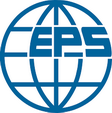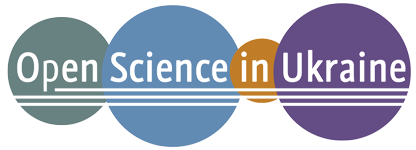Моделювання температурних змін у розчині магнетиту при індукційному нагріванні
DOI:
https://doi.org/10.15330/pcss.23.3.536-541Ключові слова:
магнетит, магнітна гіпертермія, моделювання процесів нагріванняАнотація
В даний час магнітну гіпертермію прийнято використовувати в лікуванні онкологічних захворювань як допоміжний метод, проте детальне моделювання процесу нагрівання живих тканин з параметрами, наближеними до реальних, дозволить віднести цей метод до основних. У статті представлено моделювання нагріву рідини з рівномірно розподіленими ідентичними джерелами енергії, що дозволяє підібрати оптимальні режими використання гіпертермії в реальних умовах. Модель пояснює часову залежність температури водної суспензії частинок магнетиту при постійній температурі оточуючого середовища Tenv, базується на експериментальних даних і використовує рівняння закону Ньютона. Згідно з отриманими результатами припущено, що проблеми перегріву можна уникнути, використовуючи контрольовані концентрації магнетиту близько 40 мг/см3.
Посилання
L.A. Sivak, I. Smolanka, V.Е. Orel, A.V. Romanov, М.Yu. Klimаnоv, A. Loboda, S.I. Korovin, Magnetothermia of malignant tumors, Clinical oncology, 26(2), (2017).
W. Rao, Z.S. Deng, J. Liu, A Review of Hyperthermia Combined With Radiotherapy/Chemotherapy on Malignant Tumors, Crit. Rev. Biomed. Eng., 38, 101 (2010); https://doi.org/10.1615/CritRevBiomedEng.v38.i1.80
E.A. Périgo, G. Hemery, O. Sandre, D. Ortega, E. Garaio, F. Plazaola, F.J. Teran, Fundamentals and advances in magnetic hyperthermia, Applied Physics Reviews, 2, 041302 (2015); https://doi.org/10.1063/1.4935688
R. Samchenko, Thermosensitive composites of ferromagnetic nanoparticles for medical purposes (analysis of systems for research of thermal parameters), Measuring Equipment and Metrology, 72, 142 (2011).
R.B. Roemer, Engineering aspects of hyperthermia therapy, Ann. Rev. Biomed. Eng., 1, 347 (1999); https://doi.org/10.1146/annurev.bioeng.1.1.347
L. Roizin-Towle, J.P. Pirro, The response of human and rodent cells to hyperthermia, Int. J. Radiat. Oncol. Biol. Phys. 20(4), 751 1991; https://doi.org/10.1016/0360-3016(91)90018-y
C. Morris, R. Myers, and S.B. Field, The response of the rat tail to hyperthermia, The British Journal of Radiology 50(596), 576 (1977); https://doi.org/10.1259/0007-1285-50-596-576
S.N. Tabatabaei, J. Lapointe and S. Martel, Hydrogel encapsulated magnetic nanoparticles as hyperthermic actuators for microrobots designed to operate in the vascular network, 2009 IEEE/RSJ International Conference on Intelligent Robots and Systems, 546 (2009); https://doi.org/10.1109/IROS.2009.5354162 .
V. Kusigerski, E. Illes, J. Blanusa, S. Gyergyek, M. Boskovic, M. Perovic, V. Spasojevic, Magnetic properties and heating efficacy of magnesium doped magnetite nanoparticles obtained by co-precipitation method, J. Magn. Magn. Mater. 475, 470 (2018); https://doi.org/10.1016/j.jmmm.2018.11.127 .
A.B. Salunkhe, V.M. Khot, S.H. Pawar, Magnetic Hyperthermia with Magnetic Nanoparticles: A Status Review, Curr. Top. Med. Chem. 14, 572 (2014); https://doi.org/10.2174/1568026614666140118203550
P. Wust, B. Hildebrandt, G. Sreenivasa, et al., Hyperthermia in combined treatment of cancer, Lancet Oncol. 3, 487 (2002); https://doi.org/10.1016/S1470-2045(02)00818-5
J. Van der Zee, G.D. González, G.C. van Rhoon et al., Comparison of radiotherapy alone with radiotherapy plus hyperthermia in locally advanced pelvic tumours: a prospective, randomised, multicentre trial, Lancet, 355(9210), 1119 (2000); https://doi.org/10.1016/S0140-6736(00)02059-6
N.R. Datta, O.S. Gómez, U.S. Gaiplemail et al., Local hyperthermia combined with radiotherapy and-/or chemotherapy: Recent advances and promises for the future, Cancer Treat. Rev., 41(9), 742 (2015); https://doi.org/10.1016/j.ctrv.2015.05.009
B. Alberts, A. Johnson, J. Lewis, D. Morgan, M. Raff, K. Roberts, and P. Walter, Molecular Biology of the Cell 6th Edition, (Garland Science, New York, 2015)
N. Danyliuk, S. Lischynska, T. Tatarchuk, V. Kotsyubynsky, Magnetite nanoparticles synthesized using grape fruit extract: synthesis, morphology, hyperthermia application and catalytic activity in hydrogen peroxide decomposition, Physics and Сhemistry of Solid State, 23(1), 77 (2022); https://doi.org/10.15330/pcss.23.1.77-88
Y. Shlapa, M. Kulyk, V. Kalita, T. Polek, A. Tovstolytkin, J.-M. Greneche, S. Solopan and A. Belous, Iron-Doped (La,Sr)MnO3 Manganites as Promising Mediators of Self-Controlled Magnetic Nanohyperthermia, Nanoscale Research Letters 11, 24 (2016); https://doi.org/10.1186/s11671-015-1223-6
M.R. Cornell and U. Schwertmann The Iron Oxides: Structure Properties Reactions Occurences and Uses 2nd Completely Revised and Extended Edn (Wiley, New York, 2003).










